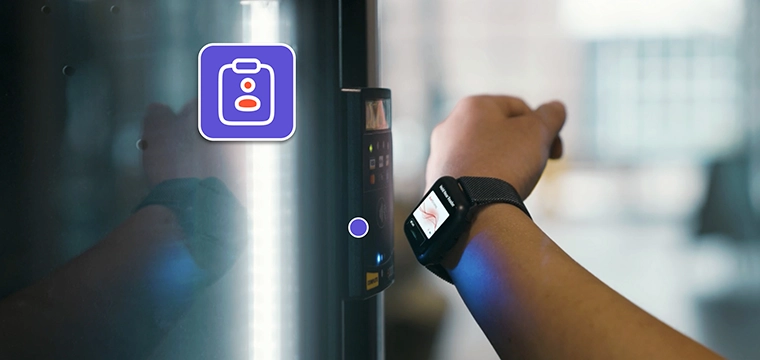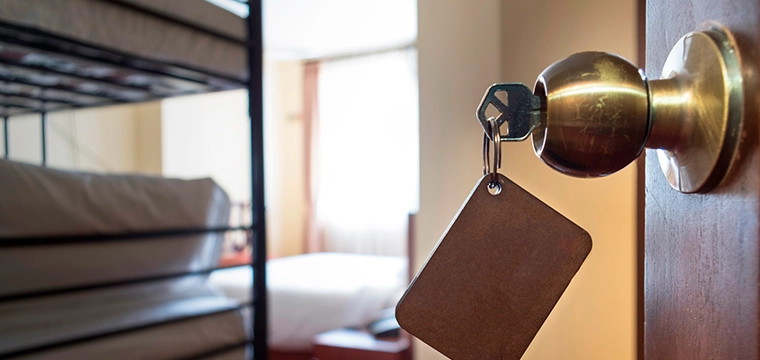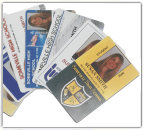 Access, attendance tracking, lunch programs drive the implementation provided by Scholarchip
Access, attendance tracking, lunch programs drive the implementation provided by Scholarchip
Andy Williams, Contributing Editor
Colleges have been using campus card ID systems for years. But with increasing security concerns, similar products are moving into public schools. One example: Philadelphia, Penn.’s school system where high school students at 60 schools have been provided a contactless ID card needed to gain admission to school property, track attendance, and, in some cases, buy lunch in the cafeteria.
“We have 56,000 high school students and we wanted a better handle on (them),” said Patricia DiLella, senior project manager for Philadelphia School District’s Office of Information Technology. “Before, everyone was assumed present until marked absent. We needed something to track students. With this new system, everyone is assumed absent until they tap (their card) and have physically been seen by school personnel.”
Via a request for proposal process, the district selected ScholarChip Card LLC, a seven-year-old organization whose origins date to higher education and has since incorporated K-12 schools in its lineup. While ScholarChip had been conducting a pilot program in two of Philadelphia’s middle schools, it landed the five-year contract because it had “better technology, ease of implementation and cost,” said Ms. DiLella. “It was state of the art and they had experience with smart cards in universities.”
“We spent a year and half doing evaluations in the pilot program (with the middle schools),” said Dr. Maged Atiya, ScholarChip’s founder and chief technology officer. “We’ve provided a contactless card (using NXP’s MiFARE technology) to every high school student in the district.”
Ms. DiLella added that the district, Pennsylvania’s largest, was “in the process of implementing the system in three large middle schools. We concentrated on high schools first because they needed it.”
Students are encouraged to wear the lanyard-attached badge around their necks, however, many are still simply carrying them on their persons, said Ms. DiLella. “We want them to get used to wearing the cards because they’re going to be used (eventually) for classroom attendance.”
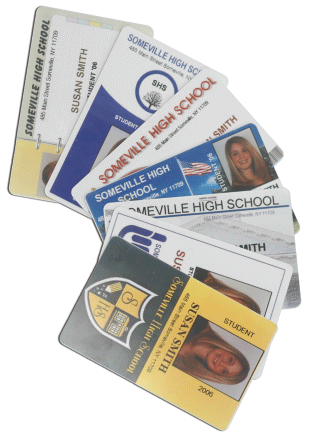 The smart ID badge is tapped when a student enters school grounds. Attendance is taken in a classroom in the normal fashion and the results are compared with the records generated when the students first enter the school. In addition, the badges can be read by portable, PDA-style readers. So, if a student is in the hallway, the badge can be read by an administrator to determine where the student should be.
The smart ID badge is tapped when a student enters school grounds. Attendance is taken in a classroom in the normal fashion and the results are compared with the records generated when the students first enter the school. In addition, the badges can be read by portable, PDA-style readers. So, if a student is in the hallway, the badge can be read by an administrator to determine where the student should be.
To accomplish this, the card contains the student’s picture and also his class schedule. Other information can be added, such as any special health needs and whether he’s on free or reduced lunch, which can be read by a POS device in the cafeteria.
The next step is implementing electronic attendance at the classroom level. She said some schools would like to put readers in classrooms so students can walk by, thus registering their physical attendance in the class. But that’s not something the district is looking at as a whole because it’s expensive and would require readers in each classroom.
“The (first) challenge is making sure teachers have computers,” she said. “If a child is marked as tapping in (when he first enters the school) when the teacher gets to her class for the day, it shows he’s present.” She then manually identifies that the student is in the classroom. If he’s not, a notation is made on the computer.
“We opted right now not to have devices hanging on the door,” she said. Inevitably, they would be subject to vandalism. “So the teacher will be doing it. This system does help tremendously in finding kids and keeping track of them.”
Eventually, the POS system in the cafeteria will be able to have the foodservice portion on the card and ultimately an e-purse. But right now it just notifies cafeteria personnel that the child is eligible for free and reduced lunch, said Ms. DiLella.
In, the technology-savvy Microsoft School of the Future in Philadelphia, the cards are also used to open lockers. “I don’t think it will be implemented at our other schools anytime soon,” she said. It would require either upgrading the lockers or, more likely, installing new ones, which is an expense the district isn’t willing to undertake at this point.
Each school issues its own cards. “The school can queue a card and print it or we can print it at our data center,” sats Dr. Atiya. “It’s all up to what the school wants to do. (It is a major) implementation of distributed smart card issuance and printing. We have almost 70 printers in the field.”
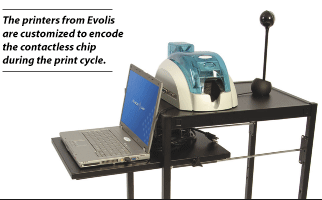 The printers from Evolis are customized to encode the contactless chip during the print cycle. According to Dr. Atiya, as the blank card is physically printed, a unique digital ID is added to the card that contains the student’s schedule data, emergency information, cafeteria e-purse, etc.
The printers from Evolis are customized to encode the contactless chip during the print cycle. According to Dr. Atiya, as the blank card is physically printed, a unique digital ID is added to the card that contains the student’s schedule data, emergency information, cafeteria e-purse, etc.
“Our approach is ideal … for large urban school districts,” adds Dr. Atiya. “We installed 300 devices in Philadelphia inside of five weeks. That’s because of the architecture of our system. Everything is self-configurable.”
It seems that the Philadelphia experience supports his claim. “The technology is unbelievable,” Ms. DiLella said in rating the overall system. “We implemented in 59 schools in six weeks. That’s unprecedented. ScholarChip was out here helping them with training and helping us get more accurate data. Now we’re able to assist schools manage and keep accurate attendance records.”
Additional resources:
Visit Scholarchip online at www.scholarchip.com.
